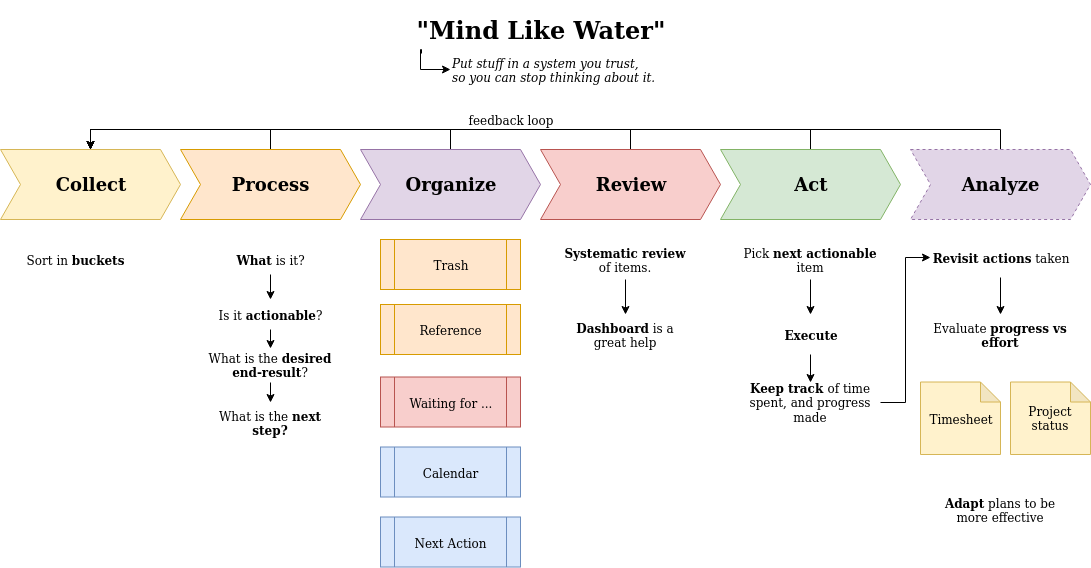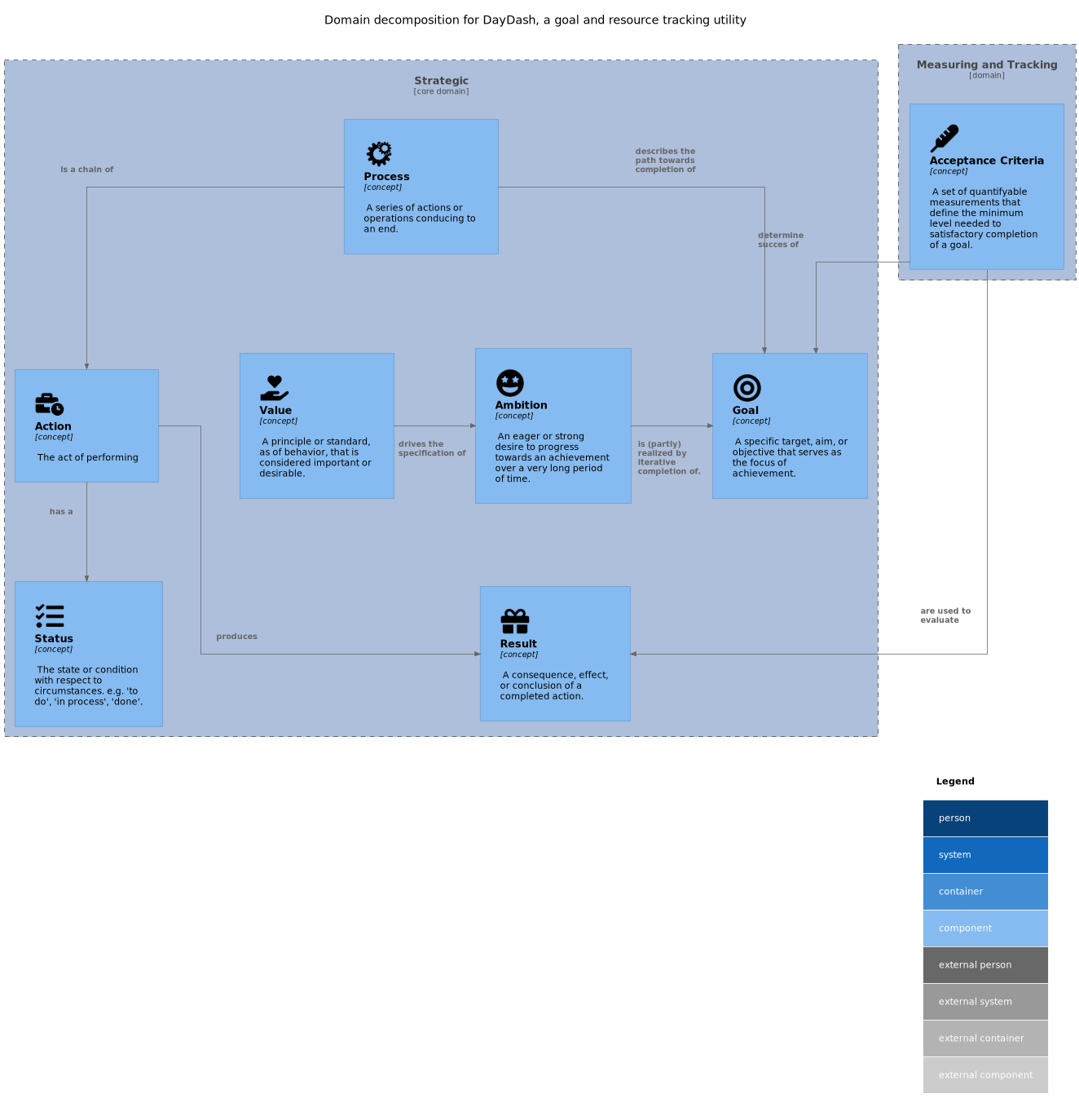Domain model
Heavily inspired by Getting Things Done methodology, the end goal is to provide the user with a customizable flow that allows them a frictionless transition between storing ideas, planning and task-tracking.

Domain functional decomposition

Project Structure
Significant quality attributes
| Principle | related quality attributes |
|---|---|
| A “pure” core domain containing the logic | Maintainability, Extensibility |
| Modular Adaptors connecting the logic to the outside world | Extensibility, Interoperability |
| Flexibility of deployment and infrastructure | Portability |
| Outside interaction trough RESTful endpoints | Portability, Interoperability |
Application layers
Multi-tiered layered approach, mostly following the hexagonal model.
Selected Technology stack
| Technology | Role | Goal |
|---|---|---|
| Java 11 | Core language | Primary language of maintainer, as well as an industry standard |
| Spring Boot | Infrastructure framework | Industry standard of practise. |
| Maven | Dependency Management | Industry standard for building java systems. While more formal than groovy, most configuration is easily done. |
| Jekyll | Documentation generator | Generation of static documentation site |
| LiquiBase | Database versioning | Allow for simple-to-configure definition of database definitions. (Infrastructure-as-code) |
| SonarCloud | Static Analysis | Automated code review, vulnerability analysis |
| Markdown | Documentation language | Low barrier, low ceremony markup language. |
| PlantUml | Diagramming tool | Diagram-as-code solution, allows for in-editor creation of images. |